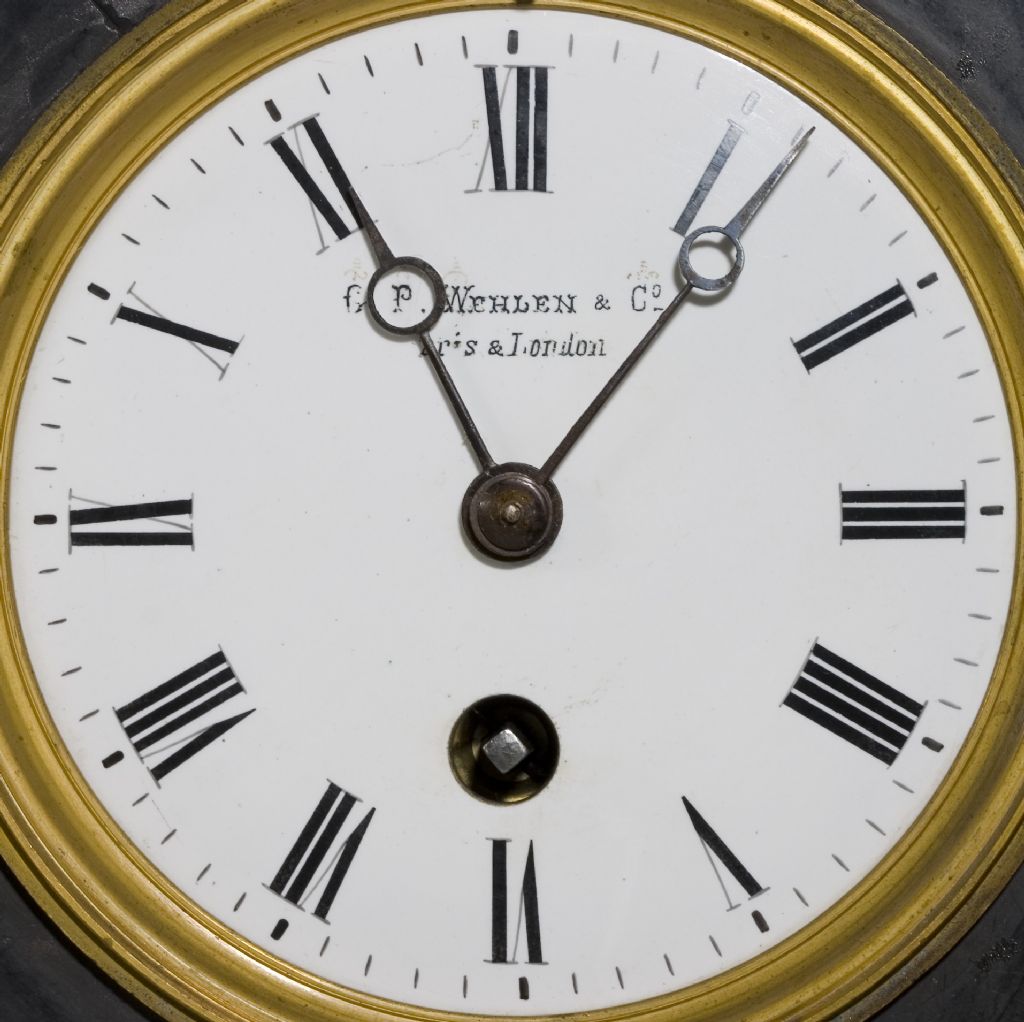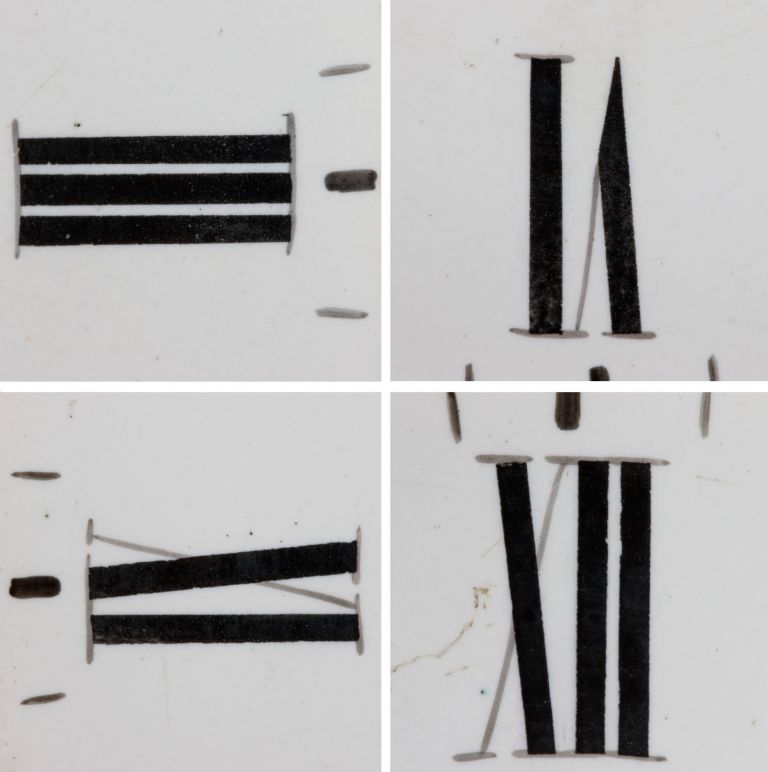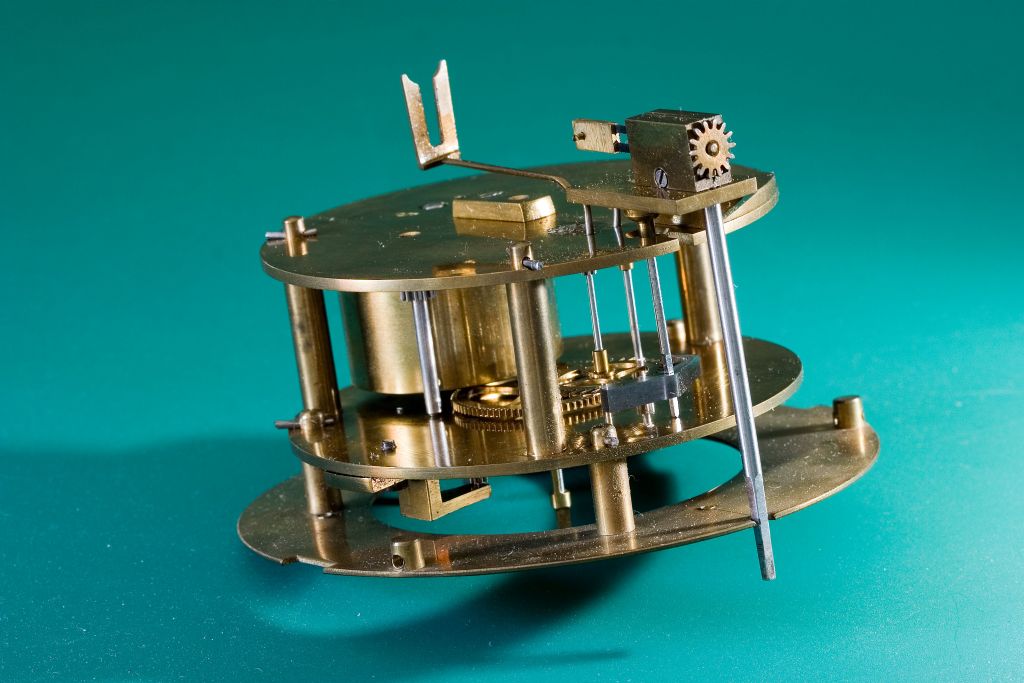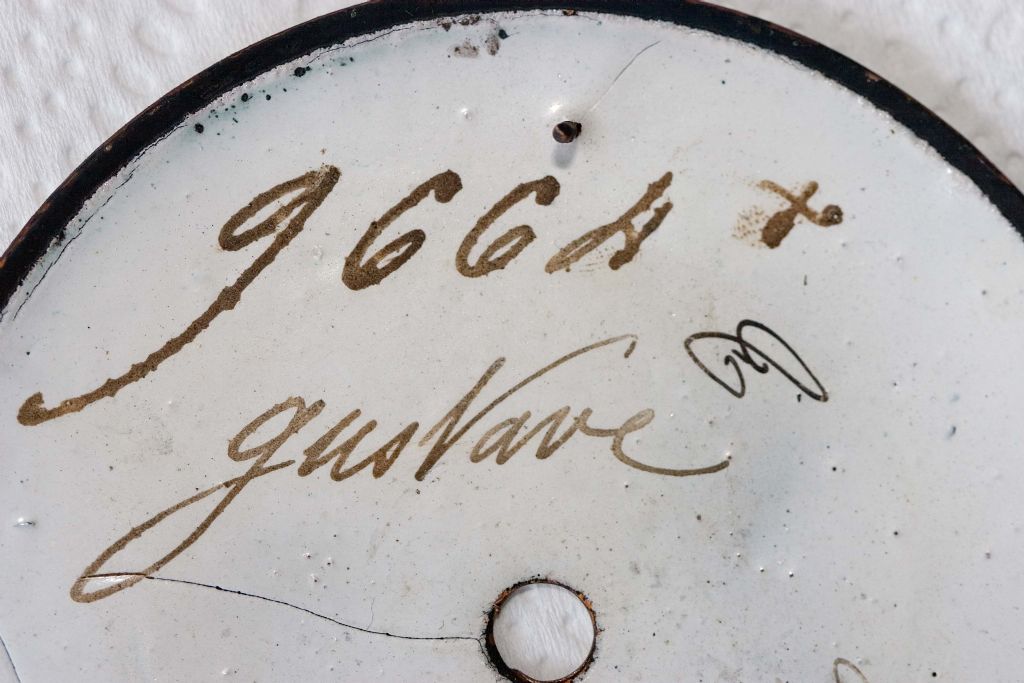I pondered whether to open a new thread about clock dials, but …
It had been suggested elsewhere that I investigate the clock for any other marks on the movement that could indicate who made the clock. While this is potentially heading away from identifying the ‘strange’ hieroglyphs, it opened another aspect – the dial itself.
What I was very reluctant to do was pull the clock apart and remove the dial. I ain't as steady as I used to be.
However, it turned out to be an opportunity to add a very tiny drop of clock oil to those pivots I chose to leave on a previous occasion. There was also a slight issue that the escapement wouldn’t work with the mechanism (and therefore the dial) truly vertical. Twisted a few degrees ACW and it would tick merrily. Otherwise, it would stop. The fault lay with either the crutch (and/or the fork) being out of line with the pendulum, see here …
**LINK**
and here …

With the mechanism back in place, judicious bending of the crutch arm restored most of the misalignment.
As for the dial itself, I found evidence of traditional enamelled copper methods used during its construction. A very shallow copper ‘dish’ retains the glazing powder during firing, similar to that seen in this video …
**LINK**
… and (presumably) provides better control of glaze thickness, especially at the edges.
On the back was the number 9664. It’s the same number stamped on the back plate of the mechanism. Perhaps of greater interest was to find Gustave written on the back. Was it his writing or simply a means of identifying that the dial was for him?

Several possibilities come to mind. What do you think?
Sam
PS – For a closer look, there are now three photo albums applicable to this thread and marked – Wehlen A, B, and C .
Edited By Sam Stones on 17/08/2019 00:26:42
Sam Stones.




 , and, on moon dials, maps were printed on the hemisphere 'humps'. With so many operations necessary to produce a finished dial, and from the large number of surviving Osborne dials, it is clear that there was the potential for a significant workforce, but how many is unknown. Despite this, if the meagre evidence from later dialmakers is a guide, there were probably not as many workers as might be imagined.
, and, on moon dials, maps were printed on the hemisphere 'humps'. With so many operations necessary to produce a finished dial, and from the large number of surviving Osborne dials, it is clear that there was the potential for a significant workforce, but how many is unknown. Despite this, if the meagre evidence from later dialmakers is a guide, there were probably not as many workers as might be imagined.



